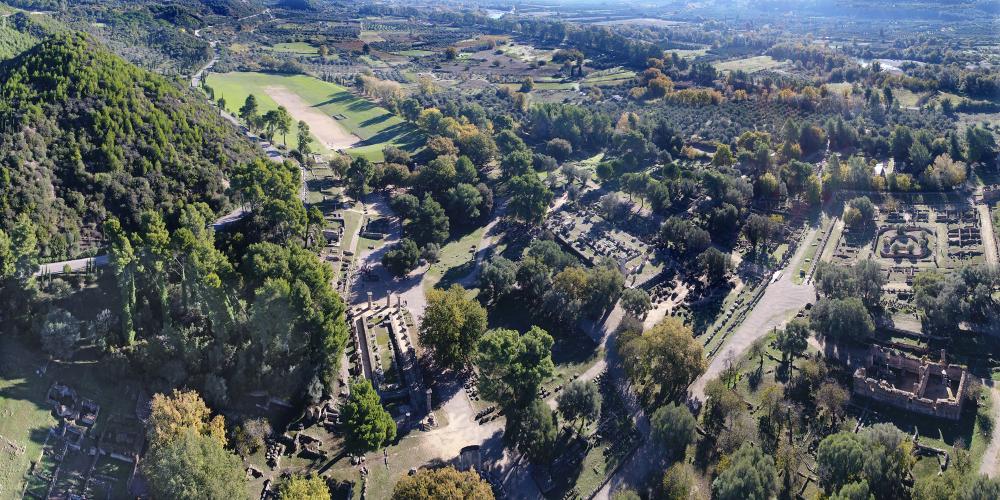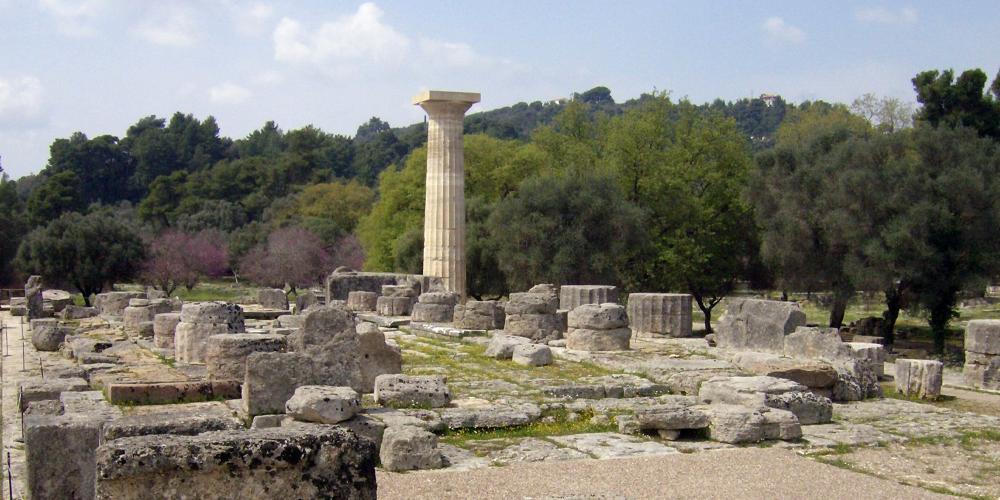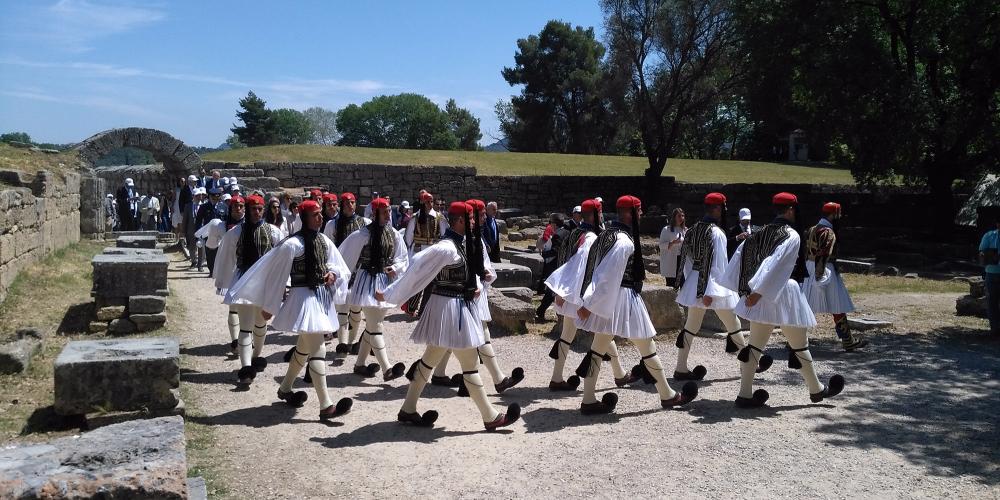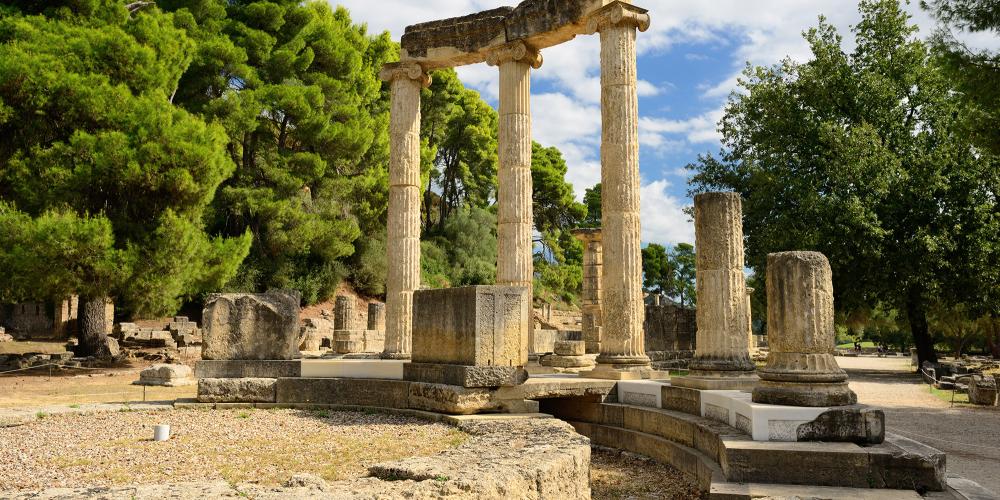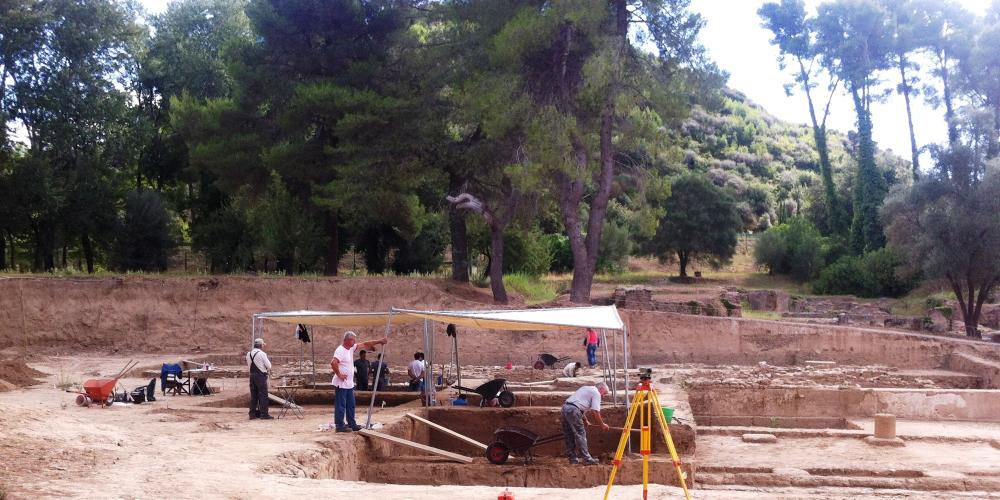Archaeological Site of Olympia, Greece

The Olympic Games—the most famous and important sporting event in the ancient world—paid homage to the finest athletes. That tradition continues to this day, nearly 3,000 years later. But Olympia was not just used every four years to laud mortals. It was also a place where remarkable works of art and culture were created and shared to worship the Greek god Zeus.
It is this melding of history and the molding of modernity that makes this site so special. The Olympic Games in the times of ancient Greece were about more than sport. They represented peace and the nobility of competition. These ideals, and elements of the events, have continued to this day.

The modern Olympic Games are undoubtedly the world’s most important sporting competition and have their basis here. From the marathon to the olive wreath and the regularity of the event, there are still clear influences today from the ancient Greek times.
Stepping into the stadium, you imagine the roar of the crowd. This is the same track where athletes raced for glory millennia ago. The remains of dozens of buildings and temples sit among the shade of trees on the archaeological site. Some were specifically built for sporting events, and some for the worship of Zeus. A museum holds a collection of priceless artefacts that once decorated the sanctuary. See Olympia come alive with music and culture at its major events—the Ancient Olympia International Festival and the Olympia International Film Festival for children and young people.
The Roots of Western Society
Olympia, located in the Ilia (Elis) region in the north-west of the Peloponnese Peninsula, dates back to the end of the final Neolithic period (4th millennium BC), and is considered one of the most important places to trace the roots of Western society due to its religious, political, and sports tradition.
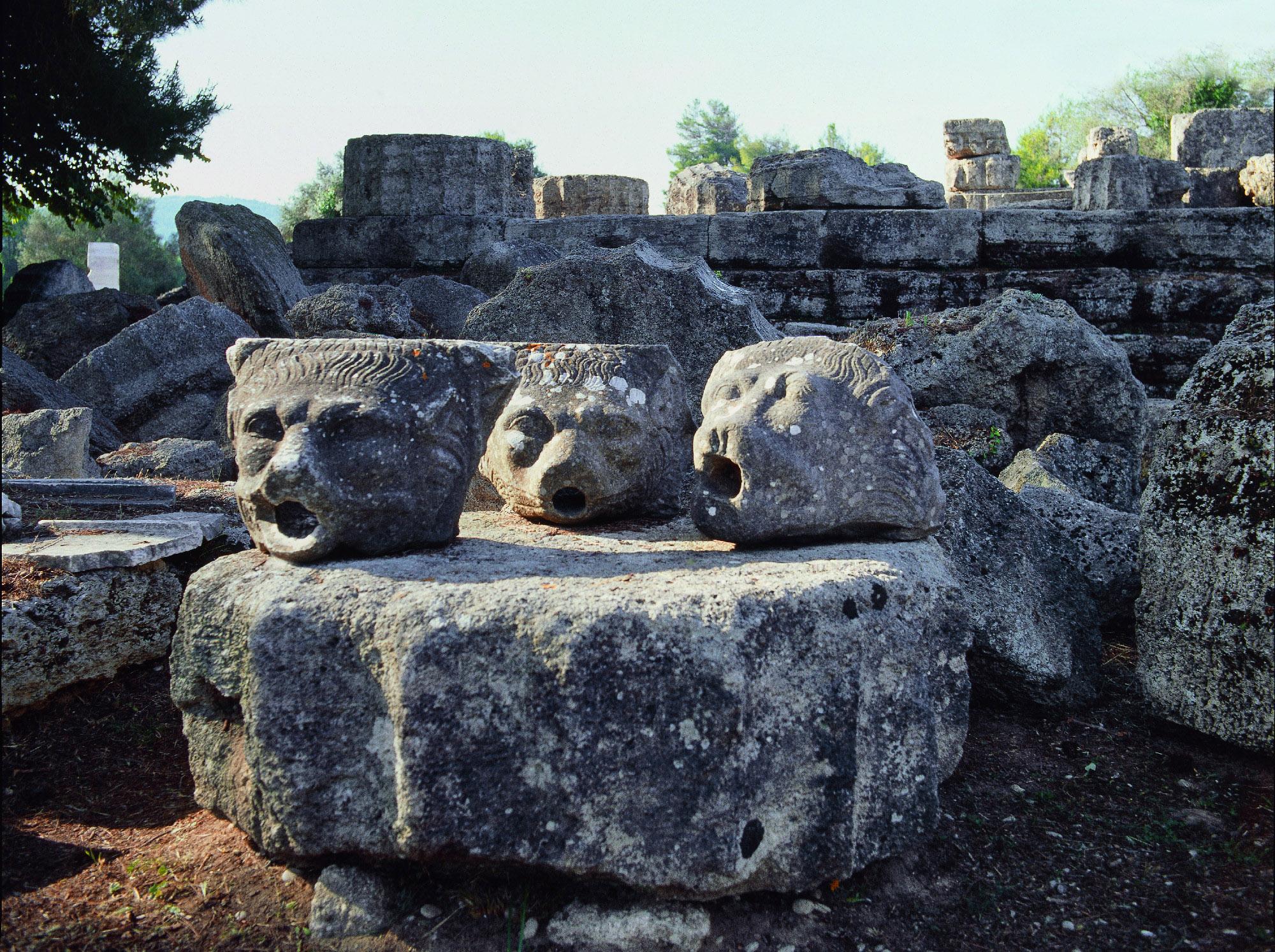
Olympia was the centre of worship of Zeus, the father of the twelve Olympian gods. Some of the most remarkable works of art were created to adorn Altis, the sacred grove and sanctuary. Great artists, such as Pheidias, put stamps of inspiration and creativity here, offering unique artistic creations to the world. Μany masterpieces have survived: large votive archaic bronzes, pedimental sculptures and metopes from the temple of Zeus, and the famous complex of Hermes by Praxiteles. These are all major works of sculpture and key references in the history of art.

Still visible inside the peribolos (enclosed court) of the Altis are the shrines to the gods, the principal temples of Zeus and Hera, and the remains of some very ancient sanctuaries—such as the Pelopion and a row of Treasuries to the north, at the foot of the Kronion hill. The divine precinct is packed with history and importance. There are structures used by the priests (Theokoleon), the administration (Bouleuterion), state (Prytaneion), and accommodation (Leonidaion and Roman hostel) buildings. There are also residences for distinguished guests (Nero’s House) and all the sports structures used for the preparation and celebration of the Olympic Games: the stadium and the hippodrome to the east, and the thermal baths, the palaestra and the gymnasium to the south and west.

The Beginning of International Sport
The Olympic Games were celebrated regularly beginning in 776 BC. The Olympiad—a four-year period between two successive celebrations falling every fifth year—became a chronological reference and dating system used widely in the Greek world. But, the concept of Olympic honor was the most important legacy left to modernity. In ancient times, athletes agreed to a three-month sacred truce and came together from all the Greek cities of the Mediterranean world to compete. This practice demonstrates the loftiest ideals of Hellenic humanism: peaceful and loyal competition among free and equal men with their only ambition being the symbolic reward of an olive wreath.
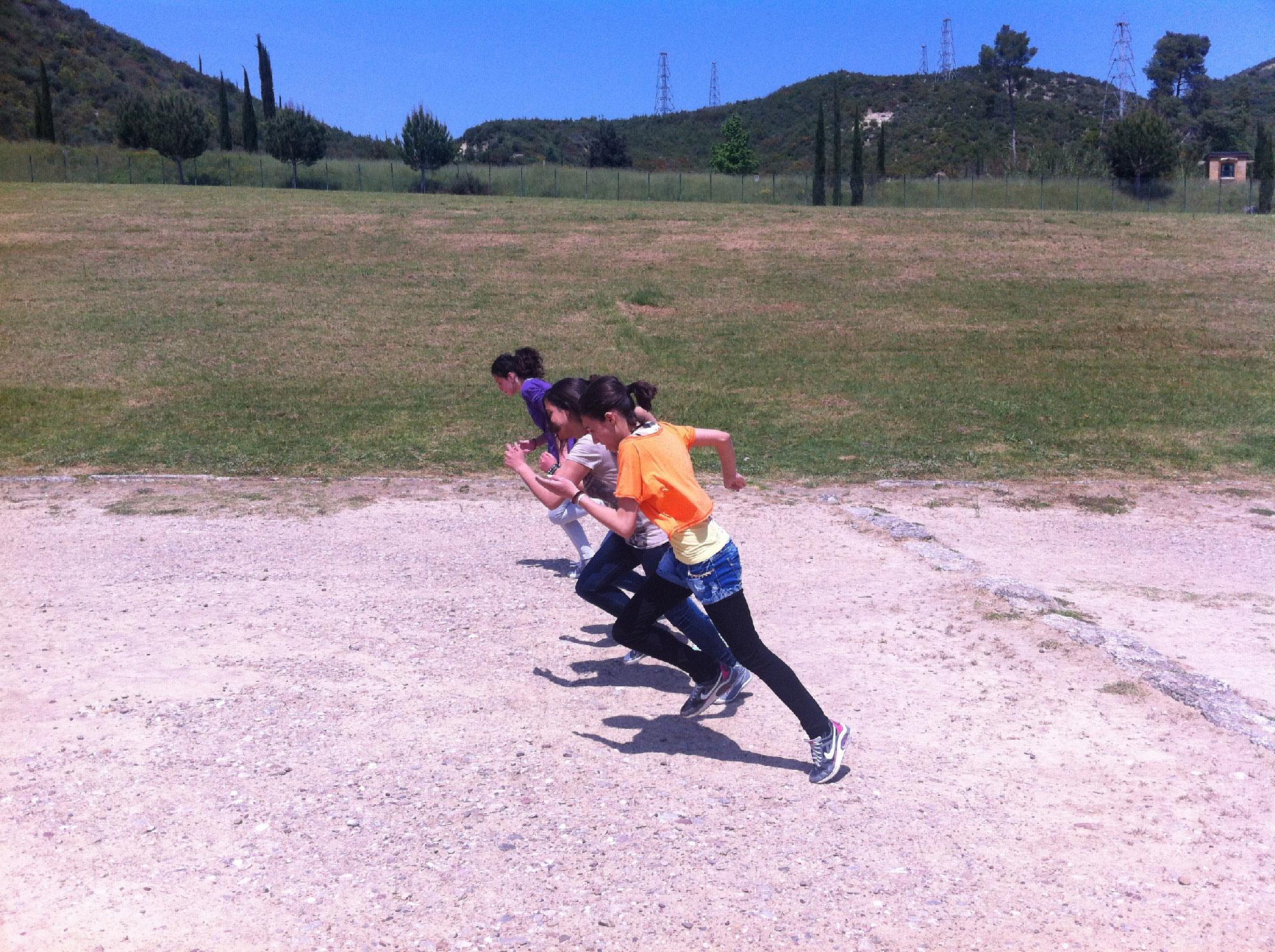
The revival of the Olympic Games in 1896, through the efforts of Pierre de Coubertin, illustrates the lasting nature of the ideals of peace, justice, and progress—the most fragile attributes of human heritage. The values of fair competition and sacred truce that were established during the ancient Games, remain among humanity's highest goals. Consequently, today's visitors can feel the same spiritual and ideological force that drove athletes thousands of years ago.
How to Get There
By bus, you can reach Olympia from Athens via Pyrgos, the capital of the region. By car, it is 290 kilometres from Athens (about 3.5 hours). If travelling by boat, the nearests ports are Katakolo (34km), where cruise ships arrive, Killini (66km) with connection lines to and from the Ionian islands, and Patras (117km) from where you can travel to Italy by ferry. If arriving by plane, the nearest airport is Araxos, which is mostly used for charter flights.
When to Visit
Any time of the year is suitable to visit Olympia. However, the archaeological site and natural environment are at their best in spring. From late April to late October, the site and Olympia museum are open daily during the daylight hours so visitors have more time to enjoy the monuments and galleries. From November 1 to March 31, tickets for the site and museums (open from 8 a.m. until 3 p.m.) are half price. In the winter, there are typically no lines.
How to Visit
Since there are many interesting attractions in Olympia and the adjacent area, it is strongly advised that visitors dedicate at least a couple of days and stay in a nearby hotel. Although there are explanatory signs in the galleries and the site, a guided tour (not included in the ticket price) is recommended.
Sights and Attractions recommended by the locals
Archaeological Site of Olympia, Greece
Winter Time:
Daily, 08:30 - 15.30
High Season:
Daily, 08:00 – 20:00
From September 1 to September 15: 8.00-19:30
From September 15 to September 30: 8:00-19:00
From October 1 to October 15: 8:00-18:30
From October 1 to October 30: 8:00-18:00
Last Admission: 20' before closing time
Holidays:
1 January: closed
25 March: closed
Good Friday: 12.00-17.00
Holy Saturday: 08.00-15.00
1 May: closed
Easter Sunday: closed
25 December: closed
26 December: closed
April-October:
Full: €12
Reduced: €6
November-March:
Full: €6
Free admission days:
6 March (in memory of Melina Mercouri)
18 April (International Monuments Day)
18 May (International Museums Day)
The last weekend of September (European Heritage Days)
28 October
Every first Sunday from November 1st to March 31st

